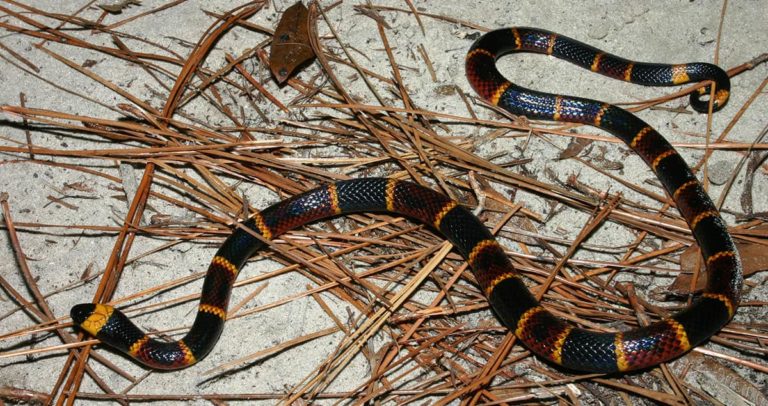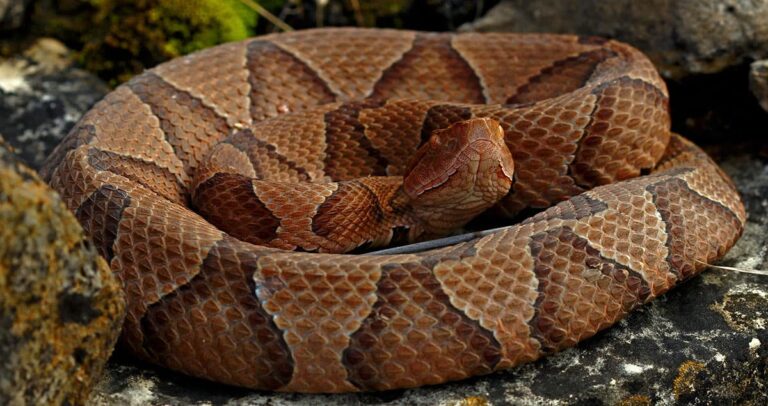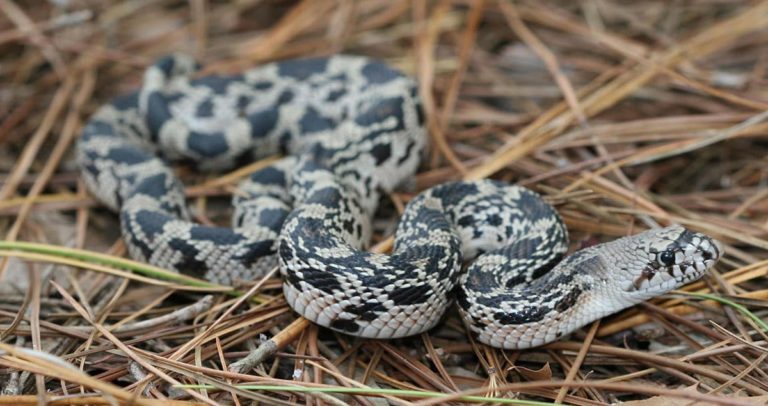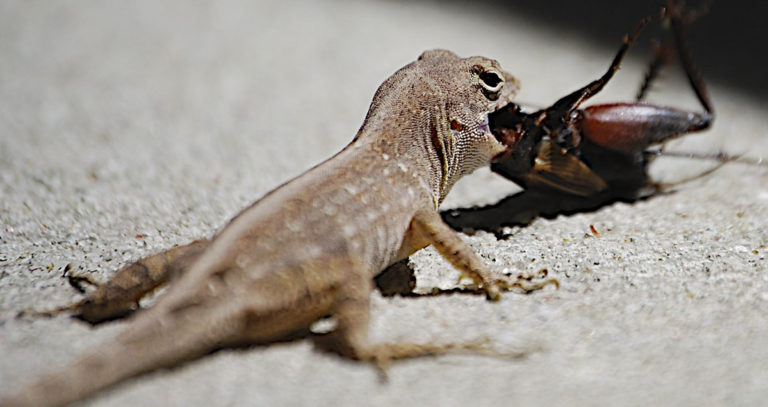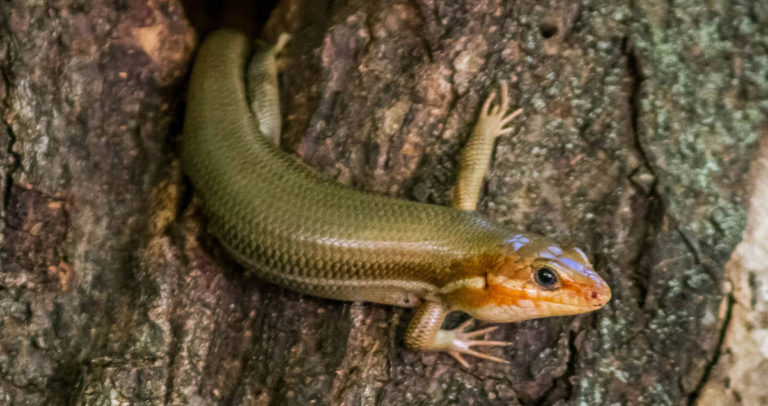Georgia Lizards With Blue Tails: An Identification Guide
If you’ve come across a lizard with a bright blue tail in Georgia, chances are you’ve encountered one of the region’s fascinating native species. Blue-tailed lizards are relatively common in Georgia, with several species sporting the vibrant blue hue. In this guide, we’ll help you identify which blue-tailed lizard you might have seen by exploring their unique characteristics, including differences in size, color, and markings.
Five-Lined Skink (Plestiodon fasciatus)
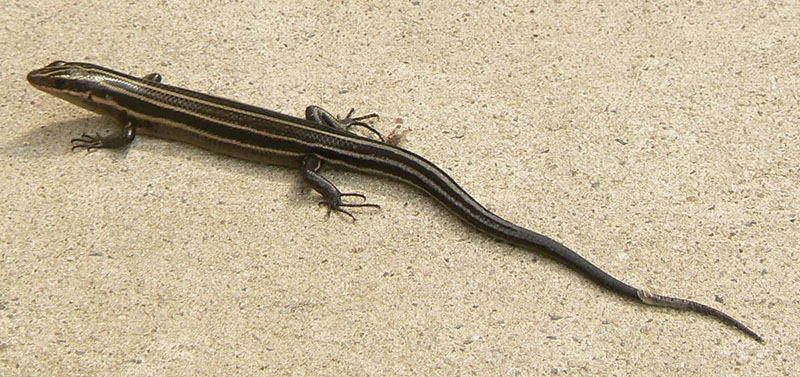
Appearance
The five-lined skink is a small to medium-sized lizard, growing up to 8.5 inches in length. As the name suggests, it has five light-colored stripes running from its head to its tail. Juveniles have striking blue tails, which fade to a duller gray-blue as they mature. Adult males develop a reddish-brown head, while adult females maintain a brown or gray coloration. The stripes on adult males may fade, becoming less visible as they age.
Identifying Characteristics
To identify a five-lined skink, look for the following features:
- Five distinct light-colored stripes running down the body
- Blue tail, especially in juveniles
- Reddish-brown head in adult males
Southeastern Five-Lined Skink (Plestiodon inexpectatus)

Appearance
The southeastern five-lined skink is similar in appearance to the five-lined skink, growing up to 8.5 inches in length. This species also features five light-colored stripes along its body. Like its relative, the southeastern five-lined skink has a bright blue tail in its juvenile stage, which fades to gray-blue as it matures. Adult males have a reddish-brown head, while adult females retain a brown or gray coloration.
Identifying Characteristics
Distinguishing the southeastern five-lined skink from the five-lined skink can be challenging. However, the southeastern five-lined skink has a few subtle differences:
- Scales on the underside of the tail have a distinct “keel” or ridge
- Slightly shorter legs compared to the five-lined skink
- Typically found in more moist or wet environments
Broadhead Skink (Plestiodon laticeps)
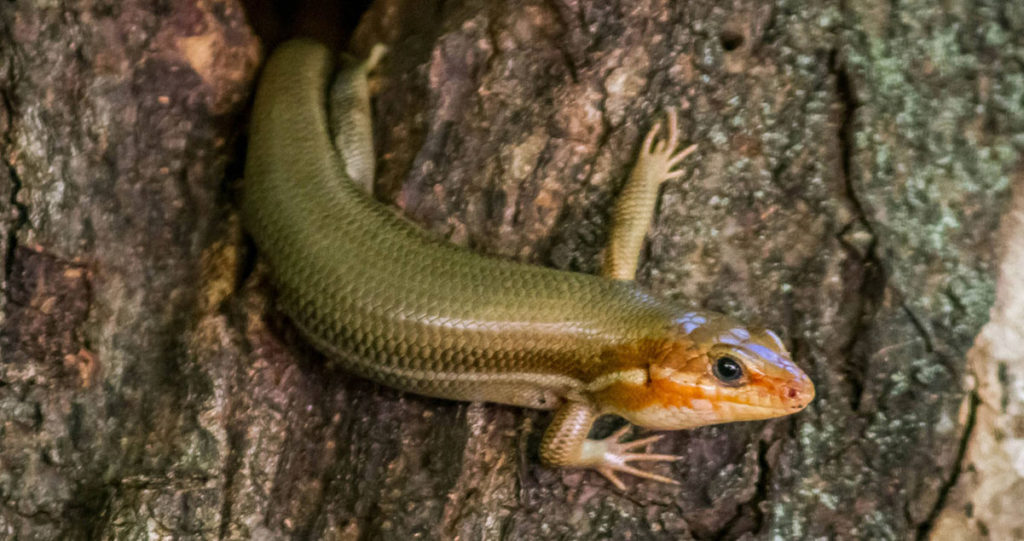
Appearance
Broadhead skinks are one of the largest skinks in Georgia, growing up to 13 inches in length. Juveniles have bright blue tails and a black or dark brown body with five thin white stripes. As they mature, the blue tail fades, and adult females retain a duller brown or olive color with faint remnants of the white stripes. Adult males have a distinctive reddish-brown head and lose the white stripes entirely.
Identifying Characteristics
To distinguish broadhead skinks from other blue-tailed species, look for these features:
- Large size (up to 13 inches in length)
- Triangular head, especially in adult males
- Reddish-brown head in adult males
Six-Lined Racerunner (Aspidoscelis sexlineata)
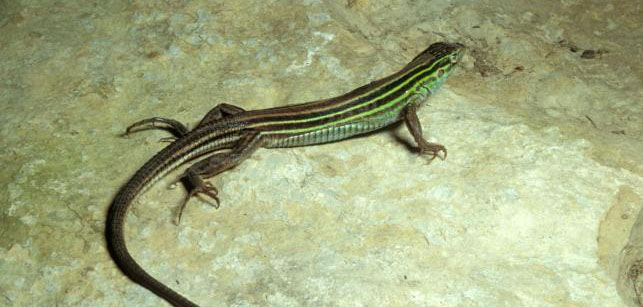
Appearance
Six-lined racerunners are slender, fast-moving lizards that grow up to 11 inches in length. They have six distinct light-colored lines running down their body, which are set against a dark green, brown, or black background. Juveniles have a bright blue tail, which fades to greenish-blue or gray in adults. Adult males develop a bright green or turquoise color on their throat and sides during the breeding season, while females maintain a more subdued coloration.
Identifying Characteristics
To identify a six-lined racerunner, look for the following features:
- Six distinct light-colored stripes running down the body
- Slender, streamlined body and long tail
- Green or turquoise throat and sides in adult males during breeding season
Eastern Fence Lizard (Sceloporus undulatus)

Appearance
Eastern fence lizards, also known as “prairie lizards” or “pine lizards,” grow up to 7.5 inches in length. Although not as commonly blue-tailed as the other species mentioned, juveniles may occasionally have a blue hue on their tail. They have a rough, keeled scale pattern, giving them a spiky appearance. Their coloration ranges from gray to brown with wavy, dark crossbars on their back. Adult males have a bright blue patch on their throat and belly during the breeding season.
Identifying Characteristics
To identify an eastern fence lizard, look for these features:
- Rough, keeled scales giving a spiky appearance
- Wavy, dark crossbars on the back
- Blue patch on the throat and belly in adult males
Are Blue-Tailed Lizards Harmful to Humans?
Many people may wonder if any of these blue-tailed lizards are dangerous or harmful to humans. The good news is that none of the species we’ve discussed pose any significant threat to people. All of the lizards mentioned are non-venomous, and they generally prefer to avoid human contact. However, there are a few things to keep in mind when encountering these reptiles in the wild.
Bites
While it’s unlikely that any of these lizards would bite a person without provocation, they may do so if they feel threatened or cornered. In most cases, a bite from one of these lizards would be relatively mild, causing little more than minor pain and some localized swelling. To avoid being bitten, it’s best to observe these fascinating creatures from a safe distance and refrain from handling them.
Salmonella
Lizards, like many other reptiles, can carry Salmonella bacteria, which may be transmitted to humans through direct or indirect contact with the animals or their feces. Salmonella infection can cause symptoms such as diarrhea, fever, and abdominal cramps. To minimize the risk of contracting Salmonella, always wash your hands thoroughly after handling a lizard or touching any surfaces they may have come into contact with, and avoid touching your face or eating before washing your hands.
Impact on Ecosystem
While not directly harmful to humans, it’s essential to remember that these blue-tailed lizards play a vital role in maintaining the balance of their ecosystems. They help control insect populations, which can impact human health and agriculture, and also serve as prey for larger predators. For this reason, it’s essential to respect these creatures and their habitats, refraining from causing them harm or removing them from their natural environment.
Final Thoughts
Georgia is home to a diverse array of blue-tailed lizard species, each with unique identifying characteristics. If you’re trying to determine which lizard you’ve encountered, pay close attention to the color patterns, markings, size, and shape. By doing so, you’ll not only gain a greater understanding of these fascinating reptiles but also develop a deeper appreciation for Georgia’s incredible biodiversity. So, next time you’re out exploring Georgia’s natural landscapes, keep an eye out for these remarkable blue-tailed wonders.


